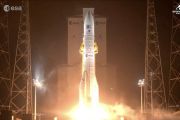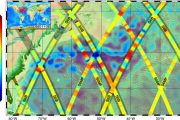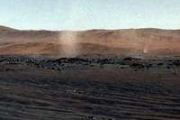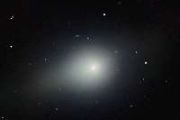
Copernical Team
Best Free Fax App: Top 6 Reliable Choices for Free Online Faxing
 Need to send a fax without a clunky machine or hefty fees? Plenty of people are searching for better ways to handle documents, especially as more work and school tasks shift online. b>The best free fax app offers a simple, effective solution for anyone wanting to send papers quickly from their phone or computer, without the headaches of old-school faxing. /b>
These days, people expect tec
Need to send a fax without a clunky machine or hefty fees? Plenty of people are searching for better ways to handle documents, especially as more work and school tasks shift online. b>The best free fax app offers a simple, effective solution for anyone wanting to send papers quickly from their phone or computer, without the headaches of old-school faxing. /b>
These days, people expect tec NASA raises chance for asteroid to hit moon
 NASA has announced that an asteroid about 200 feet in diameter is now slightly more likely to crash into the moon.
According to the newest data collected, NASA's Center for Near-Earth Object Studies at the agency's Jet Propulsion Laboratory has refined the expected course for Asteroid 2024 YR4 and has given it an increased 4.3% probability of striking the moon on Dec. 22, 2032.
T
NASA has announced that an asteroid about 200 feet in diameter is now slightly more likely to crash into the moon.
According to the newest data collected, NASA's Center for Near-Earth Object Studies at the agency's Jet Propulsion Laboratory has refined the expected course for Asteroid 2024 YR4 and has given it an increased 4.3% probability of striking the moon on Dec. 22, 2032.
T ESA Delivers: 50 years booklet

ESA Delivers: 50 years booklet
50 hallmark achievements across 50 years
Earth from Space: Vienna’s Danube divide
 Image:
A close-up view of Vienna, Austria’s capital city, is featured in this image from April 2025.
Image:
A close-up view of Vienna, Austria’s capital city, is featured in this image from April 2025. SpaceX Starship explodes during routine test
This request seems a bit unusual, so we need to confirm that you're human. Please press and hold the button until it turns completely green. Thank you for your cooperation!
Press and hold the button
If you believe this is an error, please contact our support team.
185.132.36.159 : 5bb06fd9-1f7b-4c26-83cd-0ce6e21f
ESA at Le Bourget 2025 - Day Four Highlights

The European Space Agency looked back on its heritage and looked forward to a sustainable future on the fourth day of the International Paris Air Show.
Another tether deorbiting test mission takes shape
This request seems a bit unusual, so we need to confirm that you're human. Please press and hold the button until it turns completely green. Thank you for your cooperation!
Press and hold the button
If you believe this is an error, please contact our support team.
185.132.36.159 : a758202e-3d63-4b3a-b85d-57a0db93
SpaceX retargets crewed Axiom Space launch
This request seems a bit unusual, so we need to confirm that you're human. Please press and hold the button until it turns completely green. Thank you for your cooperation!
Press and hold the button
If you believe this is an error, please contact our support team.
185.132.36.159 : a936a578-1148-4df8-b572-70b324ca
Researchers take one small step toward planning life on Mars
This request seems a bit unusual, so we need to confirm that you're human. Please press and hold the button until it turns completely green. Thank you for your cooperation!
Press and hold the button
If you believe this is an error, please contact our support team.
185.132.36.159 : 84a0dbe9-3d3d-43fb-8586-d2e6f46b
NASA to gather in-flight imagery of commercial test capsule re-entry
This request seems a bit unusual, so we need to confirm that you're human. Please press and hold the button until it turns completely green. Thank you for your cooperation!
Press and hold the button
If you believe this is an error, please contact our support team.
185.132.36.159 : d6fd651d-8e9f-4ecc-97cd-a7786942




























